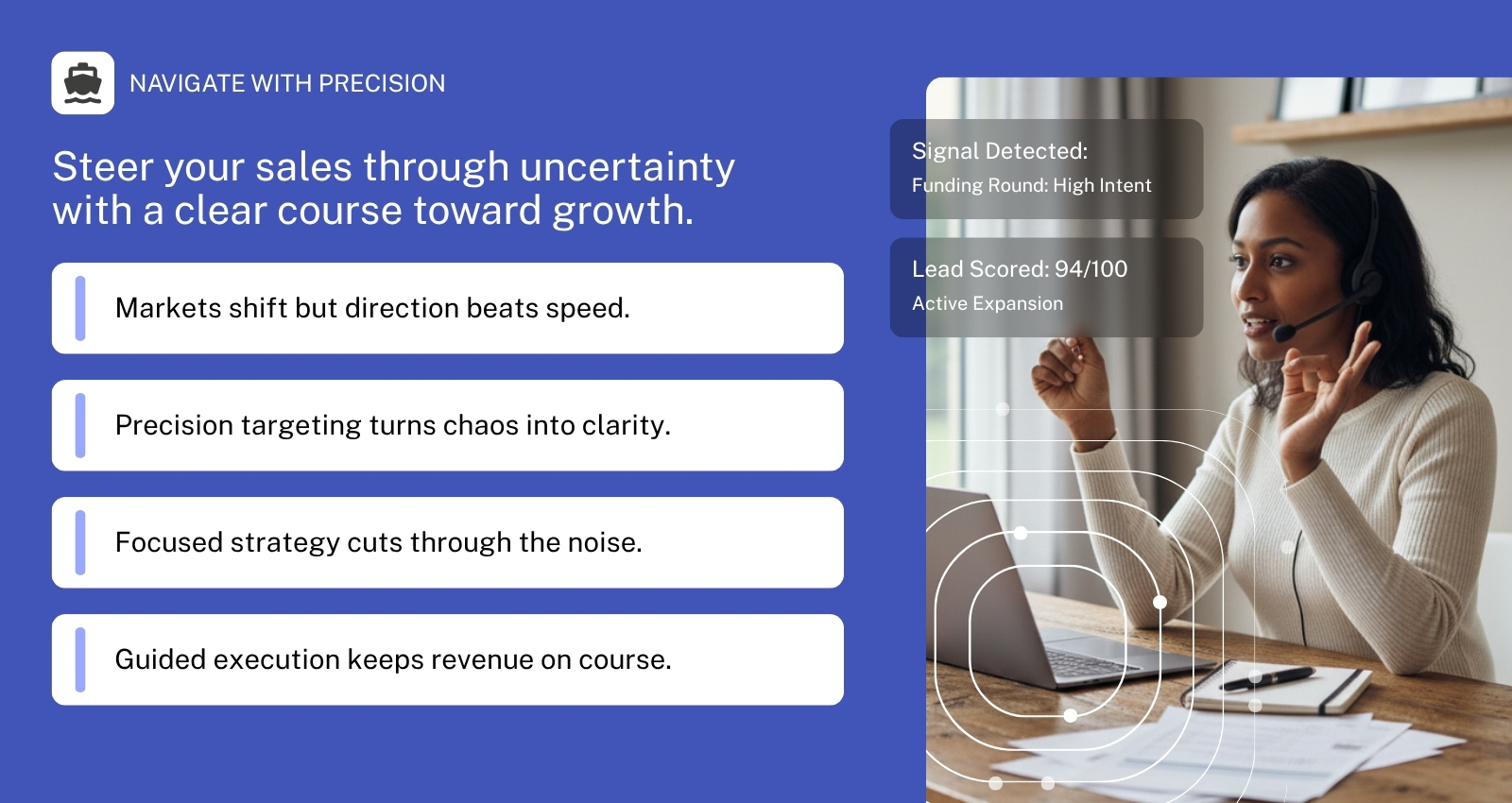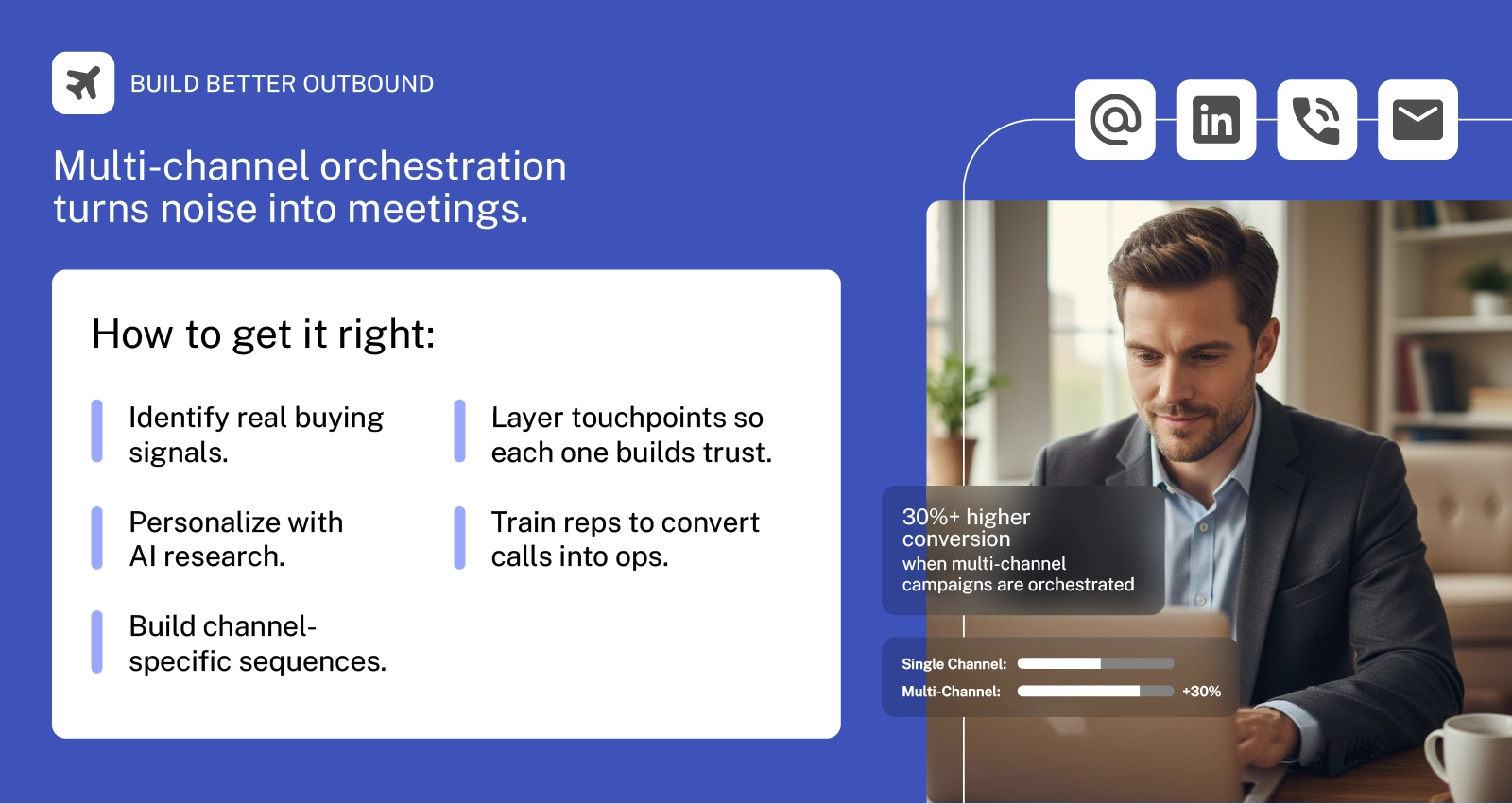

7 DOS & DON'TS OF B2B VIDEO MARKETING

Video is fast becoming the leading tool used by creatives, sales reps, campaign managers, and marketers. Why? Because moving imagery is proven to be more memorable over text alone. Video can be used for anything; an introduction to your LinkedIn profile, an advertising campaign, sales enablement, online interviews, or just posting a cute video of your dog. Cisco predicts by 2022 that 82% of all content created will be video; which means it is not enough to just be creating video content, it needs to be attention-grabbing.
B2B VIDEO MARKETING: DO OR DIE
B2B sales and marketing teams have been using 1:1 video as a tactic to stand out – a personalised, unpolished approach to video marketing – where you address your audiece directly by speaking into a camera.
Vidyard’s Senior Manager of Commercial Marketing, Jesse Walsh, knows integrating video into your marketing plan can be challenging.
https://youtu.be/LAEmcKPsUsI
“When I speak with people about getting started with video, they think about highly produced, professional grade videos”. Jesse agrees this has a place, however, she also believes there’s another use-case.
“I like to think about video -especially when you’re getting started- as a great tool to increase the value and engagement you have with some of your other existing assets that are more traditional, or potentially boring”.
Video doesn’t need to be made by the professionals to be effective, watch the video to learn how Jesse uses video in her marketing strategy at Vidyard.
LinkedIn is adapting towards the growth of video content, with new features such as stories, and video intros to your profile, there is more opportunity than ever to utilise video. Now is the time to get on board with 1:1 video. Unsure where to start? Here are the three key areas to focus on…
VISUALS

#1 DON'T BE AWKWARD
Sitting and talking in front of a camera can feel a little alien.
Unfortunately, if you look awkward the audience will feel awkward, which is why it is important to act natural. People want to see your personality. It makes you more relatable. This may seem easier said than done, so here’s our tips for coming across confident on camera:
- Keep your body language open and avoid being hunched or slumped
- Using eye contact will give the appearance of chatting to the audience directly
- Small gestures for emphasis will make you appear more natural
- Remember to smile!
#2 DRESS FOR YOUR NAN'S BIRTHDAY
A great video should be relatable, but not overstepping the line into unprofessional. Unless you are wearing a costume for a reason, your outfit should be similar to what you would wear to your nan’s birthday lunch, i.e smart but not too formal. Key things to remember:
- Your clothes should be ironed, clean, and neat
- You don’t need to dress formal if that isn’t part of your company brand image
- Avoid wearing anything that casts a shadow onto your face, such as hoodies or hats
- Avoid wearing clothing with big logos, especially if your video is going to be posted via your company
https://youtu.be/D7dQaFcyGf0
#3 STEP AWAY FROM THE BEACH
Backgrounds are great for incorporating another element to your video, but make sure it is relevant. You want the audience to pay attention to you, not the beach you’re standing on! Additionally, consider your lighting, and how visible you will be. The best-suggested backgrounds are:
- Plain and simple – such as a white wall
- Alternatively, a nice homely setting
- Avoid unmade beds, messy floors, or piles of washing
- Film in a bright room, using natural light where possible
AUDIO

#4 AVOID DISTRACTIONS
Videos should have clear audio, people need to hear you! Lots of background noise can be distracting to both you and your audience, which is why you should:
- Film in a quiet environment with no echo
- Double-check your microphone before you start to film, there is nothing more frustrating than filming the perfect clip and finding your sound wasn’t on!
- Make sure you are pronouncing your words clearly and correctly to avoid mumbling
#5 DON'T BE A ROBOT
Presenting in an uncomfortable situation can affect how we talk. This is why you should be aware of how you speak on camera. You don’t want to sound like a robot reeling off information, or speaking at 1000 miles an hour! A great tip is to pretend you’re having a chat with an old friend. This is how you can stay measured and in control of your voice:
- Practice adding an emphasis on certain words, this will help your key points stand out, and stop you from sounding monotone
- Keep your pace measured by slowing down your speech, you want to be easy to follow, but be careful you aren’t too slow and sounding it out
- If in doubt, practice by talking your message through with a friend, this will help you add depth to your speech
https://youtu.be/wDVb8DpRe40
#6 DON'T WING IT
Scripts are a great way to check you’re covering all the key points. However, it shouldn’t spill out your facts and figures. Equally, you want to be engaging, not reading off a piece of paper. The better you know your script, the more natural you will appear. So here are some tips to help you remember:
- Write out your script on a separate piece of paper
- Record yourself reading and listen to it back
- Read a paragraph, cover it, then say it out loud,
- Act it out before you hit the record button
ENTERTAINMENT

#7 DON'T TAKE YOURSELF TOO SERIOUSLY
Other people are competing for the attention of your audience. Therefore, any video, big or small, should follow an engaging narrative. Have fun with it!
The key is to tie your information in with a relevant message that is fun and easy to understand. You want your audience to feel you are talking to them specifically, not talking to a camera. The great thing is, there is no limit to how you can do this! But, for those looking for inspiration, here are some starting points when creating shorter, informative videos:
- Using a funny metaphor or analogy to explain your data
- Focusing the video around a prop
- Make yourself relatable by including a story that ties in with the objective of your video
- Adding graphics such as arrows or diagrams to give another element of visualisation
- Incorporate your background into your videos such as using a whiteboard to draw important stats and figures
https://youtu.be/dlPVLTqyBds
READY SET ACTION
So, now you have the tips you need to create a great video, it’s time to put it into action. Vidyard has a host of resources to help you create video content, and they can also guide you through video hosting, personalisation, and video analytics too. To get a better understanding of how you can use video within your ABM strategy, send us a message at hello@punchabm.com


Video is fast becoming the leading tool used by creatives, sales reps, campaign managers, and marketers. Why? Because moving imagery is proven to be more memorable over text alone. Video can be used for anything; an introduction to your LinkedIn profile, an advertising campaign, sales enablement, online interviews, or just posting a cute video of your dog. Cisco predicts by 2022 that 82% of all content created will be video; which means it is not enough to just be creating video content, it needs to be attention-grabbing.
B2B VIDEO MARKETING: DO OR DIE
B2B sales and marketing teams have been using 1:1 video as a tactic to stand out – a personalised, unpolished approach to video marketing – where you address your audiece directly by speaking into a camera.
Vidyard’s Senior Manager of Commercial Marketing, Jesse Walsh, knows integrating video into your marketing plan can be challenging.
https://youtu.be/LAEmcKPsUsI
“When I speak with people about getting started with video, they think about highly produced, professional grade videos”. Jesse agrees this has a place, however, she also believes there’s another use-case.
“I like to think about video -especially when you’re getting started- as a great tool to increase the value and engagement you have with some of your other existing assets that are more traditional, or potentially boring”.
Video doesn’t need to be made by the professionals to be effective, watch the video to learn how Jesse uses video in her marketing strategy at Vidyard.
LinkedIn is adapting towards the growth of video content, with new features such as stories, and video intros to your profile, there is more opportunity than ever to utilise video. Now is the time to get on board with 1:1 video. Unsure where to start? Here are the three key areas to focus on…
VISUALS

#1 DON'T BE AWKWARD
Sitting and talking in front of a camera can feel a little alien.
Unfortunately, if you look awkward the audience will feel awkward, which is why it is important to act natural. People want to see your personality. It makes you more relatable. This may seem easier said than done, so here’s our tips for coming across confident on camera:
- Keep your body language open and avoid being hunched or slumped
- Using eye contact will give the appearance of chatting to the audience directly
- Small gestures for emphasis will make you appear more natural
- Remember to smile!
#2 DRESS FOR YOUR NAN'S BIRTHDAY
A great video should be relatable, but not overstepping the line into unprofessional. Unless you are wearing a costume for a reason, your outfit should be similar to what you would wear to your nan’s birthday lunch, i.e smart but not too formal. Key things to remember:
- Your clothes should be ironed, clean, and neat
- You don’t need to dress formal if that isn’t part of your company brand image
- Avoid wearing anything that casts a shadow onto your face, such as hoodies or hats
- Avoid wearing clothing with big logos, especially if your video is going to be posted via your company
https://youtu.be/D7dQaFcyGf0
#3 STEP AWAY FROM THE BEACH
Backgrounds are great for incorporating another element to your video, but make sure it is relevant. You want the audience to pay attention to you, not the beach you’re standing on! Additionally, consider your lighting, and how visible you will be. The best-suggested backgrounds are:
- Plain and simple – such as a white wall
- Alternatively, a nice homely setting
- Avoid unmade beds, messy floors, or piles of washing
- Film in a bright room, using natural light where possible
AUDIO

#4 AVOID DISTRACTIONS
Videos should have clear audio, people need to hear you! Lots of background noise can be distracting to both you and your audience, which is why you should:
- Film in a quiet environment with no echo
- Double-check your microphone before you start to film, there is nothing more frustrating than filming the perfect clip and finding your sound wasn’t on!
- Make sure you are pronouncing your words clearly and correctly to avoid mumbling
#5 DON'T BE A ROBOT
Presenting in an uncomfortable situation can affect how we talk. This is why you should be aware of how you speak on camera. You don’t want to sound like a robot reeling off information, or speaking at 1000 miles an hour! A great tip is to pretend you’re having a chat with an old friend. This is how you can stay measured and in control of your voice:
- Practice adding an emphasis on certain words, this will help your key points stand out, and stop you from sounding monotone
- Keep your pace measured by slowing down your speech, you want to be easy to follow, but be careful you aren’t too slow and sounding it out
- If in doubt, practice by talking your message through with a friend, this will help you add depth to your speech
https://youtu.be/wDVb8DpRe40
#6 DON'T WING IT
Scripts are a great way to check you’re covering all the key points. However, it shouldn’t spill out your facts and figures. Equally, you want to be engaging, not reading off a piece of paper. The better you know your script, the more natural you will appear. So here are some tips to help you remember:
- Write out your script on a separate piece of paper
- Record yourself reading and listen to it back
- Read a paragraph, cover it, then say it out loud,
- Act it out before you hit the record button
ENTERTAINMENT

#7 DON'T TAKE YOURSELF TOO SERIOUSLY
Other people are competing for the attention of your audience. Therefore, any video, big or small, should follow an engaging narrative. Have fun with it!
The key is to tie your information in with a relevant message that is fun and easy to understand. You want your audience to feel you are talking to them specifically, not talking to a camera. The great thing is, there is no limit to how you can do this! But, for those looking for inspiration, here are some starting points when creating shorter, informative videos:
- Using a funny metaphor or analogy to explain your data
- Focusing the video around a prop
- Make yourself relatable by including a story that ties in with the objective of your video
- Adding graphics such as arrows or diagrams to give another element of visualisation
- Incorporate your background into your videos such as using a whiteboard to draw important stats and figures
https://youtu.be/dlPVLTqyBds
READY SET ACTION
So, now you have the tips you need to create a great video, it’s time to put it into action. Vidyard has a host of resources to help you create video content, and they can also guide you through video hosting, personalisation, and video analytics too. To get a better understanding of how you can use video within your ABM strategy, send us a message at hello@punchabm.com















